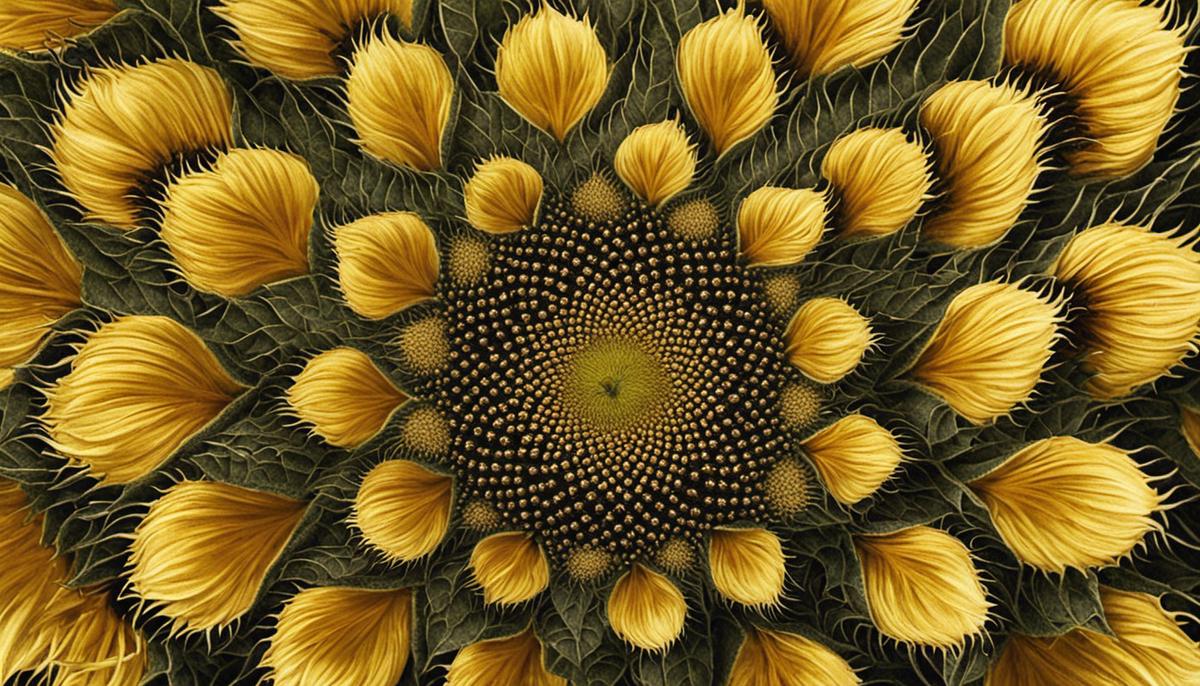Unveiling the Sunflower: Distribution and Benefits of Seeds

In the vast scheme of nature, the humble sunflower holds a sense of wonder for the casual observer and the scientifically inclined alike. Admired widely for its bold, cheery aspect, a closer look reveals the true marvel is in the sunflower’s seeds, from their enigmatic structure to their significant nutritional and economic value. Rooted in a fascinating blend of science and mathematics, the arrangement of these seeds is inexplicably tied to the Fibonacci sequence – a natural display of the brilliance of the natural world. Yet beyond the intrigue of their configuration, the utility of sunflower seeds extends far beyond nature’s canvas, becoming a nourishing staple in diets, an essential element in various industries, and a contributing factor to the economy.
Structure and Distribution of Sunflower Seeds
The peculiar arrangement and distribution of sunflower seeds
have, for centuries, captivated the minds of botanists, mathematicians, and naturalists alike. More than just a simple botanical marvel, the sunflower’s seed pattern provides a fascinating glimpse into the underlying mathematical principles that permeate nature. The enchanting helical pattern found in the sunflower head, comprised of numerous miniature florets each maturing into a seed, adheres to the Fibonacci sequence — a mathematical principle that inexplicably permeates nearly all aspects of our natural world. Each seed in a sunflower head, intrinsically positioned with consummate precision, enable the densest possible arrangement without any overlap or void. A given sunflower head starts with a single seed in its center, from which subsequent seeds grow in counter-clockwise and clockwise spirals leading outwards. The most intricate part is the frequently observed count of spiraling lines — 34 proceeding clockwise, 55 anticlockwise, or vice versa — both of which are consecutive numbers in the Fibonacci sequence. This incredible packing strategy maximizes sunlight exposure and nutrient access, subsequently maximizing overall seed production and plant survival, demonstrating nature’s striking efficiency. Consequently, one might assert that the sunflower’s beguiling beauty goes much deeper than its radiant canary petals. It taps into fundamental theories of mathematics, biology, and physics, revealing the inherent sophistication in the simple processes of nature, further emphasizing the interconnectedness of all life systems. If we only take a closer look, we’ll find that even in the humblest flora, there can lie profound mysteries waiting to be unraveled.
Nutritional and Economic Importance of Sunflower seeds
Sunflower seeds present more than just fascinating biological architectures and the elusive beauty of mathematics in nature.
Their nutritional and economic significance demands equal recognition.
The kernel of the sunflower seed, often encased within a shells of black and white stripes, is a workhorse of nutrition.
It is endowed with a high content of unsaturated fatty acids, vital minerals, antioxidants, and vitamins, making it a vital supplement in our dietary regimen.
Primarily composed of polyunsaturated fatty acids like linoleic acid, these kernels perform crucial physiological functions, including cholesterol regulation and the promotion of heart health.
Furthermore, the presence of essential minerals such as magnesium, iron, and potassium contribute towards bone health, oxygen transportation, and electrolyte balance, respectively.
The vitamin E and selenium content plays an indispensable role as a potent antioxidant, tackling oxidative damage in our bodies, simultaneously imparting anti-inflammatory benefits as well.
The economic implications of sunflower seeds are as significant as their nutritional contributions.
Their value is not confined to the kitchen or health supplement industries, but permeates the realms of economy and agriculture.
Sunflower is considered an industrial oilseed crop with high economic validity due to its wider adaptability and tremendous versatility.
The global sunflower seeds market is a significant component of the overall oilseeds industry, with its use spanning various sectors: from oil extraction to the confectionery industry, from bird feed to biodiesel production.
Primary economies, inclusive of Europe, Russia, and Argentina, base a significant part of their agricultural strategies around the cultivation and processing of sunflowers seeds.
Moreover, the by-products of sunflower seed processing, such as the meal remaining after oil extraction, are highly sought after as a protein-rich feed supplement in poultry and livestock industries.
Thus, sunflower seeds constitute an integral part of the economic fabric, underpinning diverse industrial applications and agricultural practices.
In conclusion, the sunflower seed, while offering scientists intriguing patterns and mysteries, also provides humankind with invaluable nutritional assets and economical utilities.
Their significance, therefore, traverses the domains of biology, nutrition, economy, and beyond.
It serves as a testament to nature’s bounty and ingeniousness, a token of mathematical grandeur, and a propeller of economic prosperity; an ordinary seed embodying extraordinary potentials.

As a testament to nature’s sheer beauty, intricacy and practicality, sunflower seeds stand out not just in their structured elegance but also in their essential roles within dietary, industrial, and economic spheres. Re-connecting us with the fascinating uniformity inherent in the chaos of nature, they reveal the subtlety of the Fibonacci sequence’s mathematical genius. Concurrently, in their culinary versatility, nutritional aspects, and economic contributions in different industries, including gardening and bird feed production, they impress upon us an invaluable significance. Thus, both the patterned distribution and various uses of sunflower seeds serve as a magnificent reminder of why we should marvel and respect nature’s awe-inspiring creations.



